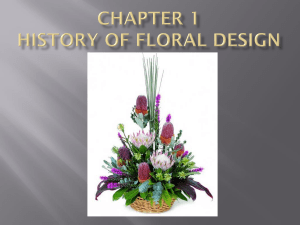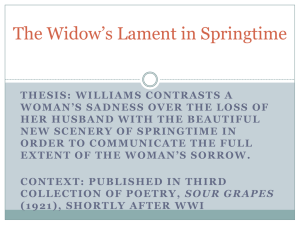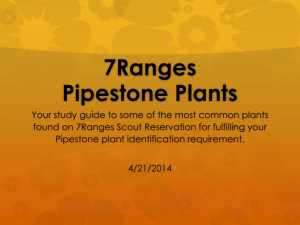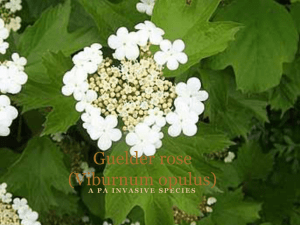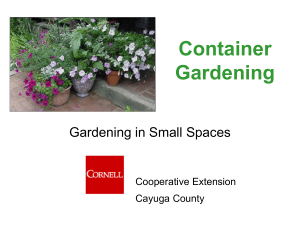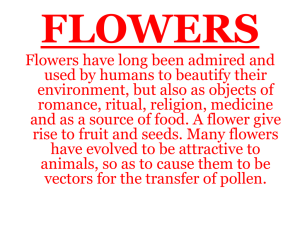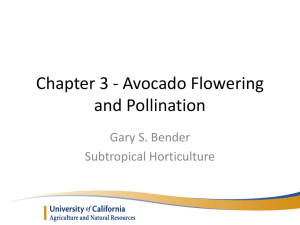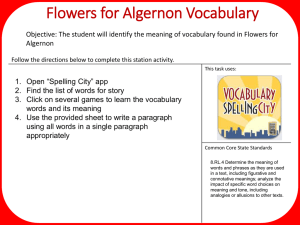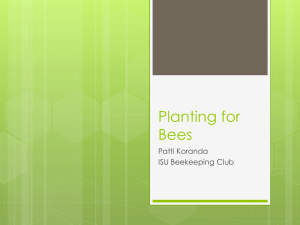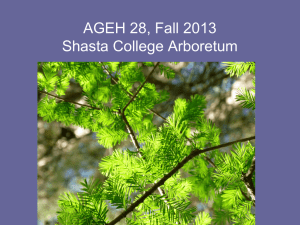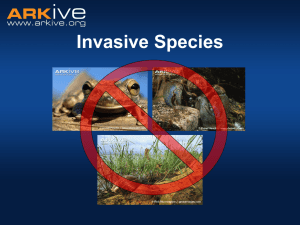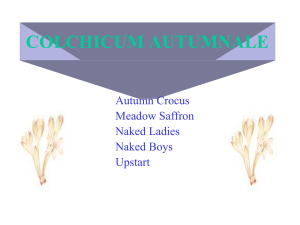Invasive Exotic Plant Management in the Southeast
advertisement
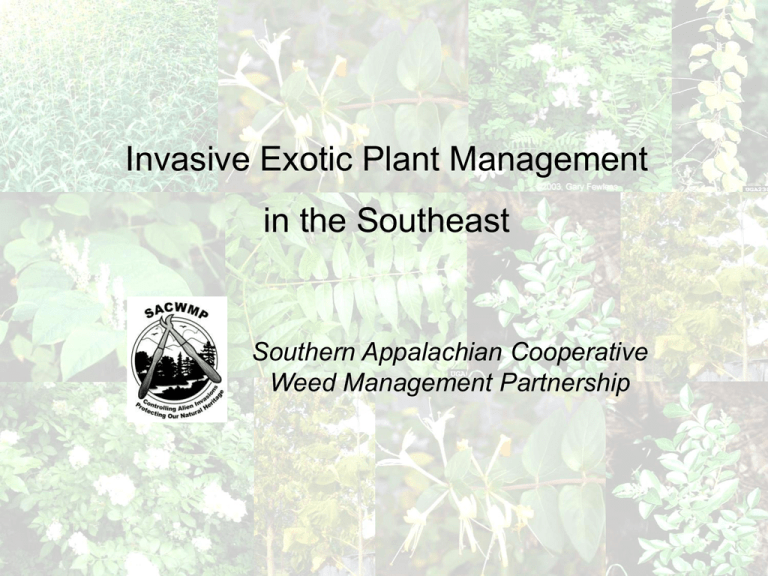
Invasive Exotic Plant Management in the Southeast Southern Appalachian Cooperative Weed Management Partnership What is an invasive exotic plant? Invasive –rapid growth and spread, persists, and has robust vegetative growth, high reproductive rate, abundant seed production, high germination rate, and longevity. Exotic –introduced by humans to locations outside its native range for livestock forage, soil retention, ornamental purposes, or accidentally. Also known as nonnative, exotic, foreign, non-indigenous, alien, noxious weeds… Invasive Species: What’s the Problem? Invasive Exotic plants out-compete native plants for space, sunlight, water, and nutrients causing a decline in biodiversity. They also: • Displace rare plant species • Alter soil characteristics and hydrologic conditions • Interfere with natural succession • Compete for pollinators • Replace complex communities with single species monocultures • Repel native birds, mammals, and insects Tree of Heaven Ailanthus altissima • Dark green, spear shaped • • • • leaves with small lobes at base with circular glands Smooth, not serrated leaf Alternate leaves on reddish twigs Crushed leaves and broken twigs have strong odor May easily be confused with sumac, black walnut, pecan, ash Princess Tree Paulownia tomentosa • Large, fuzzy, heart-shaped leaves • Upright clusters of seed pods persist throughout winter • Showy pale violet flowers in early spring • Twigs gray brown with abundant white specs Mimosa Albizia julibrissin • Small to medium sized tree with multiple trunks and spreading crown • Leaves finely divided and fern-like • Flowers a delicate white and pink clusters like pom-poms in mid summer • Bean pods 6 in long and conspicuous through early winter Privet Ligustrum sinense • Stiff, glossy, oval to • • elliptical opposite leaves Small white four petaled flowers in loose clumps with musky smell Dark blue to black berries in October Multiflora Rose Rosa multiflora • Thorny, round shaped, medium to large shrub • Serrated leaflets with toothed hairs at base of stem • Small white flowers April to June • Fleshy, spherical rose hips produce abundant seeds • May be confused with native roses, blackberry, and raspberry Japanese Knotweed Reynoutria japonica • Hollow bamboo-like • • stems 2-6 inch heart-shaped leaves that are 90º at base Small white flowers Olives Elaeagnus sp. • Alternate leaves with wavy edges, silvery on the underside • Scaly twigs with scattered thorns and abundant white dots • Round, juicy fruit in August to November containing one nutlet Japanese spirea Spiraea japonica • perennial deciduous shrub 4-6 feet in height • round, reddish brown slender stems, sometimes hairy • alternate, egg shaped leaves 1-3 inches long with toothed margins Native Virginia spiraea • rosy pink clustered flowers Oriental Bittersweet Celastrus orbiculatus • Twining deciduous woody vine • Alternate, glossy, round leaves • • • with finely toothed margins Small greenish flowers at base of leaf in May Abundant yellow fruit at base of leaf splits to fleshy red upon maturity May be confused with American bittersweet which has oblong leaves and flowers at the terminal of the stem Kudzu Pueraria montana • Three leaflets with 2-3 • • • • major lobes Hairy brown stems Light purple flowers with sweet fragrant smell in late summer Fleshy roots with massive tap roots Can grow up to 1 ft per day in summer months Japanese & Bush honeysuckle Lonicera japonica & Lonicera maackii • Opposite oval leaves • White to yellow fragrant flowers bloom during the summer • New stems are reddish brown • Creates dense, tangled masses • May be confused with trumpet honeysuckle which has red flowers and redorange berries Porcelainberry Ampelopsis brevipedunculata Chinese yam Dioscorea oppositifolia • Long climbing vines with 2-3 in wide shiny heart-shaped leaves with arc shaped veins • Pea to marble sized bulbs like small potatoes occurring at leaf nodes in late summer Chinese Silvergrass Miscanthus sinensis • Tall, densely bunched perennial grass • Long, slender, upright to arching leaves with sharp tips, rough margins and silvery-white midribs •Loosely plumed terminal panicles in Aug-Nov Garlic Mustard Alliaria petiolata • Basal rosette, dark green, • • • • heart-shaped, scalloped edged leaves Small white 4 petaled flowers in early spring Young leaves have garlic smell Emits chemicals that kill surrounding plants and microbes May easily be confused with native wildflowers such as toothworts, sweet cicely, and early saxifrage Coltsfoot Tussilago farfara • Basal, heart-shaped, slightly toothed leaves resemble a coltsfoot • Whitish fuzz rubs off on underside of leaf • Bright yellow dandelion looking flowers in early spring Japanese stiltgrass Microstegium vimineum • Flat, thin pale green • • • leaves with a white stripe down the center 1-3 ft tall and pulls up very easily Colonizes in dense masses May be confused with native grasses Partners in Invasive Exotic Plant Management Goals • • • • Prevention & Restoration Detection & Control Education Build and maintain powerful partnerships Virginia Spiraea Yellow Wood Volunteer Identification & Inventory “I don’t know if I want to keep doing this unless you guys are actually going to do something with the data” Jack Dalton, Volunteer Manual & Chemical Control Native Plant Restoration What can you do to stop the spread? • Develop a Management Plan for Your Property • Learn about invasive plants and how • • • • to identify them Clean boots, equipment, tires, and the dog before and after hiking Landscape your lawn and gardens with native plants Know the source of your fill dirt and gravel Get involved in volunteer monitoring and control efforts Online Resources www.invasive.org www.se-eppc.org www.nps.gov/plants/alien www.plants.usda.gov


